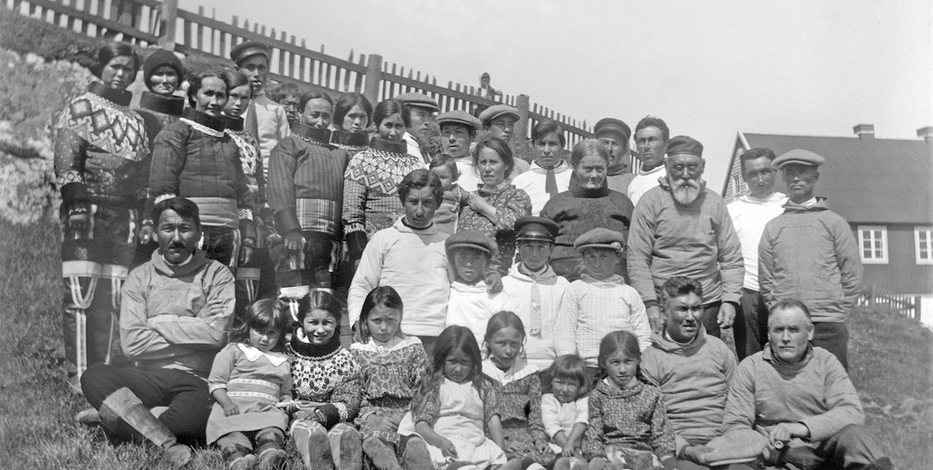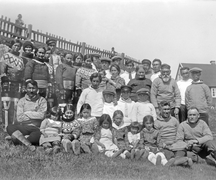Kalaallisuut
National dress

The standard festive clothing for men in west Greenland consists of a white anorak, black trousers, and kamik boots with a single row of embroidery. This is known as qaqortumaartoq - being dressed in white. In Avanersuaqa the term for a woman in festive dress is arnatoortoq. The Greenlandic concept of women’s kalaallisuut marks not only a festive occasion, but also Greenlandic identity. The clothing is not, however, reserved solely for Greenlanders, but is also worn by those who feel an affiliation with Greenland. The dress thus expresses personal as well as national identity.
Many seamstresses take great pride in the quality of their craft. Sometimes a sense of competition can be sensed between them.
Women’s National Dress
In general the national dress of women consists of a top, pants and kamik boots. The top consists of an inner garment (timmiaq) and an outer garment (anorak). The pants are short, reaching the upper thigh. The kamik boots consists of two parts: a long, inner stocking, and a short kamik. There are three main variations on national dress in Greenland: 1) West Greenlandic national dress with bead collars and sealskin pants, 2) Northwest Greenlandic national dress from the Thule area with long, white kamik boots, fox-skin pants, and a black sealskin collar, and 3) East Greenlandic national dress, which has two versions: one made solely of sealskin, and the other with a top (amaat) made of fabric.
The bead collar of west Greenland has developed apace since trade with Europeans began and beads were added to the anorak. With time these bead collars have become longer and longer. Wristlets and an inner collar of fabric have also been added. The dress of the Thule area has developed with the addition of a fabric anorak, as has the amaat of east Greenland. In the late decades of the 1900s the people of east Greenland started to wear a fabric amaat instead of the top of west Greenland to symbolise their regional identity. Today more and more people model their dress on the traditional skin clothing of east Greenland with kamik boots of depilated skin.
Men’s Full Dress
In the 1800s men’s full dress consisted of a black anorak, trousers of young, mottled sealskin, and avittat (skin embroidered) kamik boots. After 1900 the qajaq anorak was also worn on festive occasions – an anorak of unbleached linen with black edging on the hood and cuffs. Some men also wore an anorak made of eqalussuaq – a blue-grey anorak fabric. It was not until after 1920 that the white anorak gained ground as festive clothing. Until then the black anorak had been common. The white anorak was not originally festive clothing, since it was also used at work. After 1910, however, its use spread from a group of seminary students in Nuuk who started to wear it with a necktie outside the anorak in around 1920. After World War II black shoes instead of embroidered kamik boots were also worn.
In response to the fact that fewer and fewer people had the skills necessary to make Greenlandic national dress, in recent decades schools and dressmaker’s workshops have been established to revitalise this traditional craft. Kalaallisuuliornermik ilinniarfik has been established in Sisimiut, and Kittat in Nuuk.
